
7 Search Engine Optimisation Strategies to Boost Your Website's Rank
15 minutes read
Search engine optimisation (SEO) is the practice of increasing the visibility of a website in search engines. Several factors influence a site's ranking, including keyword use, title tags, meta descriptions, and more. Optimising your website for search engines can attract potential users' attention and drive traffic to your site.
Search engine optimisation is a broad topic with lots of potential for smaller businesses. The opportunity to target new customers by raising your rank on search engines can increase traffic to your site and lead to more sales.
Read on for some valuable tips on how you can optimise your website for search engines.
So here are 7 Search Engine Optimisation Strategies to Boost Your Website's Rank
Create Quality Content
Creating quality content is one of the best ways to improve your SEO. The first thing many people associate with SEO is an over-optimised article and web pages with too many keywords. However, there is a big difference between quality content and keyword-heavy writing that sounds unnatural. The best way to create quality content is to research your industry and your target audience to create engaging and useful topics. If you're looking for inspiration, take a look at your competitors' content. What is their writing style like? Is it effective? How can you improve on their work? You should also keep in mind that, while it's important to write for humans, you should also consider your website’s visitors. Avoid writing for yourself, as it's a surefire way to bore your audience. Instead, write as if you're speaking directly to your visitors.
- Clarity - They must know exactly what your business is all about
- Matching - Think about their search intent against your goals
- Transparency - Make yourself trustworthy by having industry information available, not always about you and your products
- Accuracy - All your content needs to be up-to-date; it must be relevant and accurate.
Use Keywords and Anchor Text
Best Practices for SEO-friendly Anchor text
When writing content for your website, there are certain keywords that you should include. These are known as long-tail keywords and are more specific than broader terms. An example of a long-tail keyword would be "organic baby food" instead of "baby food". This is important for two reasons. Firstly, when someone types in a search query, your website will appear in the results. Users who click your link will be brought to your website. Secondly, Google will use the keywords you include in your writing to determine your website’s ranking. Therefore, it's important to include keywords in your content. However, you also need to ensure they're not too obvious. If Google notices that you've stuffed your article with keywords, they won't rank your website. By including your keywords in the anchor text, you can make your article more keyword-heavy without sounding unnatural.
For Anchor text to be user-friendly, you need to know four factors anchor text can be:
- Succinct
- Must be relevant to the linked-to page
- Keep a low keyword density (Google is watching)
- No generic wording
Note: Not often do you get to control what anchor text links back to you from other sites. So we focus on governing your website's anchor tests.
Succinct anchor text
Although there are no set parameters on the length of an anchor text succinct. When choosing your anchor text, you have two significant factors at play:
- What is the most accurate and concise description for the linked-to page?
- What word or phrase would prompt users to click that link?
Target page relevance
As Google's algorithm continually morphs into a more complex entity, they are now focusing on more metrics than ever before to determine rankings.
One metric proven to stand out from the pack is link relevancy.
To explain link relevancy, it is a breakdown of how relatable the topics are between pages A and B if they are linked. If you have a relevant link, your rankings will probably improve for related topic queries on pages A and B.
Link relevancy is a natural occurrence when linking out to different content online. Here is how it is determined:
- The source page topic
- Anchor text content on that specific source page
When links to content are related to the topic from the source page, this is screaming relevance to the crawlers.
For example, a page about the best surfboards on the Gold Coast will get good relevance rankings from Google when it's linked to a website that sells surfing items. However, not if it's a link to baby clothing.
The Search engine's "modus operandi" is to be aware of the anchor text variations used in linking to the original article. As a result of this, use them as indicators of the article's content and judge what relevant search queries apply.
To ensure your links have firm relevancy, ensure your anchor text is as descriptive about the target page as possible.
Produce High-Quality Videos
Video is now a prominent ranking factor with Google.
Videos are becoming increasingly popular on websites and social media platforms, and for good reason: they provide an excellent opportunity to communicate your message to potential customers. Video is a great way to communicate your brand message engagingly and visually. SEO experts recommend implementing videos on your website to increase your SEO.
Its two most influential metrics are the amount of time a user spends on the pages and the backlinks that refer to your domain. The good news is that video ticks the boxes on both.
A Search conducted by Wisita between January 1 2021, and the end of April 2022 focused on the 100 pages with the highest traffic between those dates. The main focus was on time spent by users on pages or 'time on page' as referred to by Google.
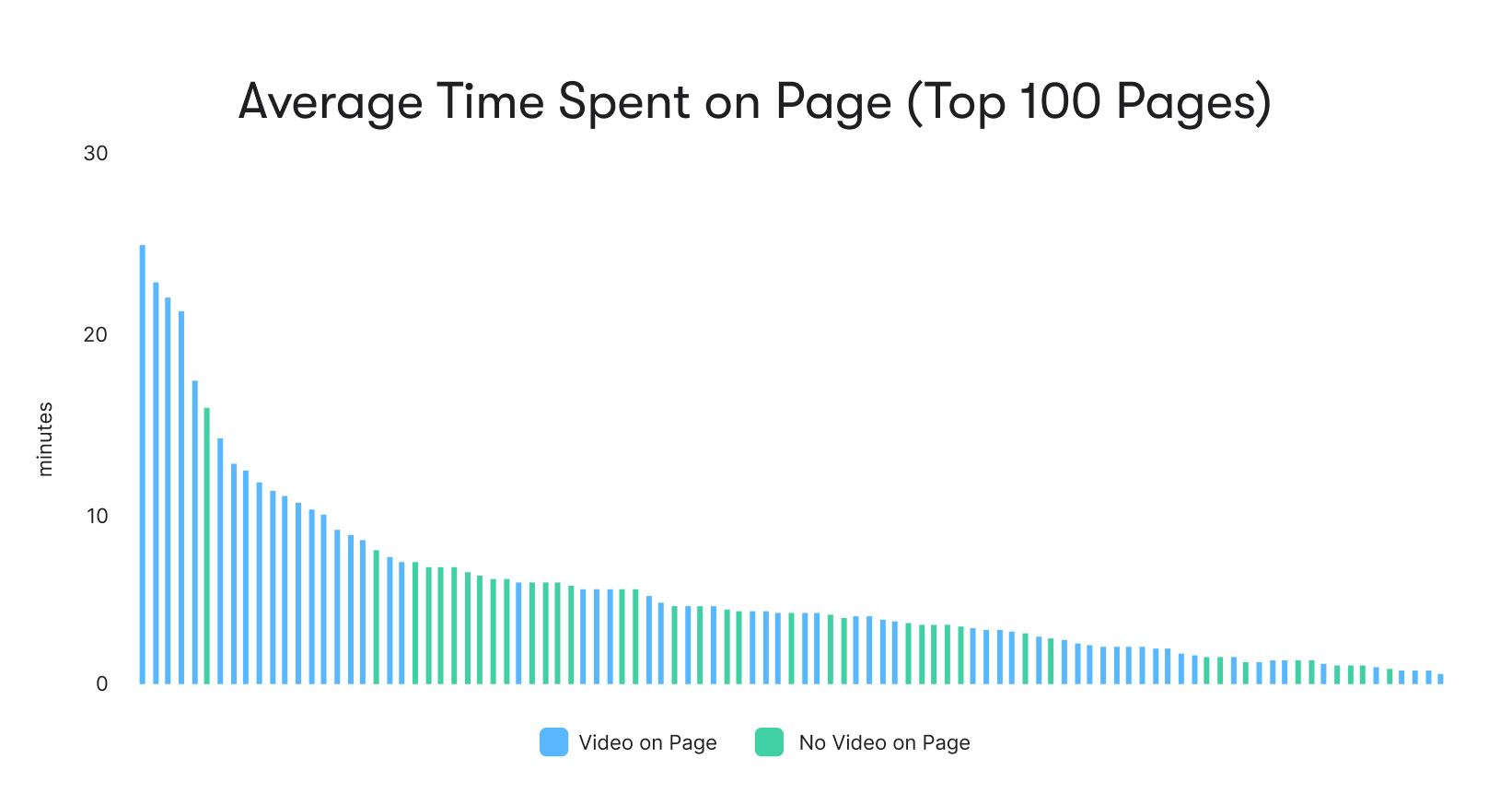
Credit: Wisitia.com
As you will see, the concentration of blue lines (including pages with video) reflects the time spent on each page and is considerably higher.
It is clear to see between pages with or without video the total time spent, and it is clear what wins.
In conclusion:
- The time spent on average on pages containing video is 6 minutes
- The time spent on average on pages with no video is 4.3 minutes
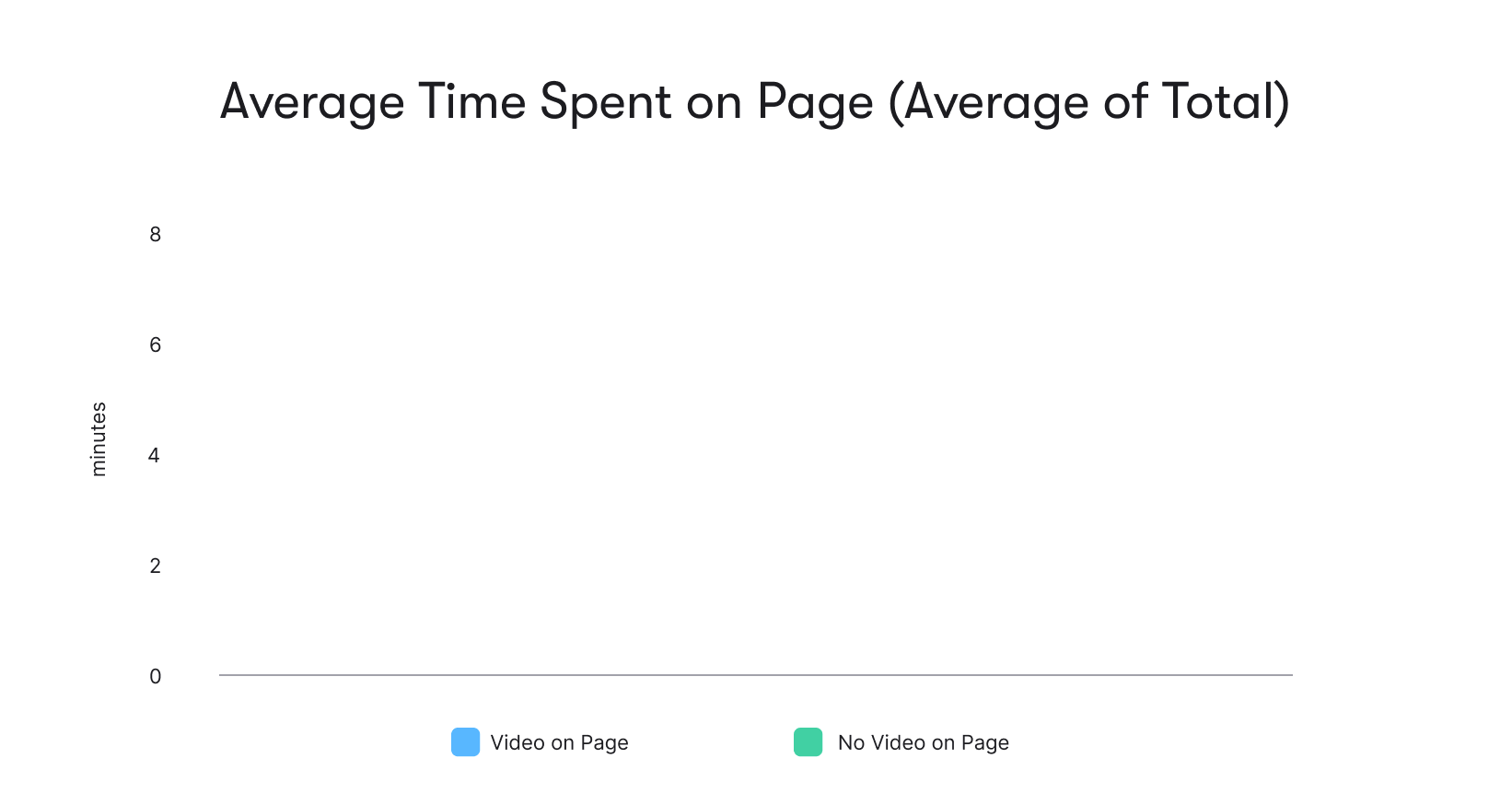
Credit: Wisitia.com
This means people spent about 1.4x more time on pages with video than without!
So you get direct and indirect SEO benefits.
Google now looks for video content that helps keep users on your website longer.
Stay Up to Date with Trends and Tools
TRENDS
Regarding SEO, it's important to stay up to date with the latest trends and tools. If you fall behind, making your mark on the industry will be difficult. For example, Google has recently announced that it will be demoting websites that aren't mobile-friendly and page experience. It's important to make sure that your site is mobile-friendly to avoid seeing a drop in your rankings. Another trend that you need to be aware of is the ever-changing landscape of SERPs (search engine results pages). Google has recently announced that they will be making changes to their core board algorithm, which means that there'll be an increased risk of your rankings dropping. That's why staying up to date with the latest trends and tools is important. If you keep an eye on changes to search engine algorithms, you can make any necessary adjustments quickly. This will help you to avoid any drastic changes to your website's ranking.
Staying abreast of the changes is a job in itself, which is why many business owners are now changing to using SEO specialists or an SEO company.
Here are a few pointers to make sure you are trying to keep up-to-date:
Keep following Google
Sign-up and follow leading digital blogs
Get involved more in your industry - Subscribe to magazines and blogs giving you ideas for articles and news feeds for the site
Keep Following Google. Before the global pandemic, Google's daily searches were around the 5 billion mark. With Google now receiving 8.5 billion searches per day, Google is the driving force you need to adhere to as the bar to which you need to raise.
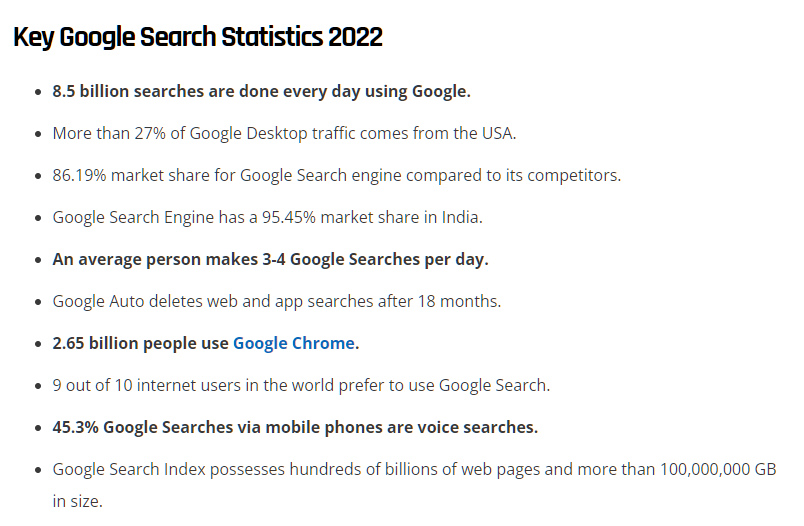
Credit: EarthWeb.com
So they set the benchmark. Many Google executives regularly post on Twitter. So this is a generic way of keeping up on announcements. Google also publishes a variety of blogs discussing the latest recommendations and updates. You can sign up and receive email notifications on new updates.
Sign-up and follow leading digital blogs.
Several digital leaders' new mission statements are to be on top of new and changing online trends for SEO.
They use a profound amount of tracking software and engagement with other search engine gurus to talk about the constant flow of changes in trends on general online behavioral patterns.
Following these blogs can give you a unique insight into re-thinking your targeting and tweaking other aspects of your online presence.
Get involved more in your industry - subscribe to magazines and blogs giving you ideas for articles and news feeds for the site
On top of blogs, you will find several industry publications, and their narrative solicits contributions from industry leaders. The publications are outstanding in continually updating interested subscribers on industry trends, news and upcoming changes, giving confidence that you have the best information to act.
You'll be quickly left behind without keeping fully up-to-date in the fast-moving marketing powerhouse. You will need an SEO agency to get you up to speed and keep you there.
TOOLS
In a fast-moving environment, strategy and tactics must be employed depending on your niche or industry.
Bricks and mortar businesses should by now understand local SEO and its benefits of driving people in the area to their front door. However, a B2B healthcare company could focus more on acquiring organic traffic to their website and blog. Here they look to gain submission form entries and gather leads that way.
So here are some simple tools to keep you abreast of SEO changes:
Google Webmaster YouTube Channel: John Mueller, Google's Webmaster Trends Analyst, answers questions from developers, marketers and SEO buffs around the globe.
Muller gets numerous SEO questions from beginner level to highly technical and advanced.
The channel keeps all previous hourly Q&A sessions to keep users updated if they have missed sessions. They are also available in Google Hangouts in different languages.
Google Algorithm Change History - MOZ: Here is a hugely informative database of every significant Google change from the previous 15 years. So if you have been in business for a while or are a digital marketer, you will be familiar with sudden drops and spikes in traffic and rankings.
When this occurs, this is the goto to find out what changes have occurred during the algorithm update. Not all the minor updates are covered, just the ones verified by Google, but it's not to be missed.
Google Analytics: Keeping a close eye on organic traffic and analysing your lead generation is essential to keeping up with SEO changes. Google Analytics is ideal for business owners who understand SEO basics but need simplified things. Google helps you understand the changes.
Google Search Console: If you are operating without Google Search Console, I recommend you click on the link and get started immediately. It's completely free.
The console keeps you constantly updated by feeding you live data on what your online presence is doing on Google. They are there to point out areas that could affect you from their crawlers being unable to index your pages.
They also notify you of any manual activity against your website.
Don't Forget About User Experience
UX Best Practices
While it's important to optimise your website for search engines, it's also crucial that you don't forget about the user experience. There's no point in having a highly-ranked website if your visitors can’t find what they're looking for or are put off by your design. When it comes to SEO, one of the most important aspects is your website's user experience. A website with a high user experience will rank higher than a poorly designed site. However, it's important not to sacrifice your SEO to improve the user experience. You can improve both your SEO and UX at the same time by following a few simple tips. You should ensure that your website is easy to navigate and that your design is visually appealing. Also, ensure that you have a site map with relevant keywords.
Although bounce rates have been a significant measuring stick for Google for years, they can't tell you precisely why this is happening.
It is never a bad idea to do an audit and why out the reasons why, and then start to improve your first impression by changing your UX design.
Here are some basic best practices to follow:
Mobile-friendly pages: Over 50 percent of web users search using their mobile.
For a new website in 2022 and beyond, Google indexes your website based on your mobile site. Don't be shocked if you didn't know mobile overtook laptop and desktop usage years ago; the only change is Google ranking mobile-first.
So this also needs optimising for images, layout, ease of use and so forth.
If this is unfamiliar territory, it's best to contact SEO specialists, and this needs to be done "Ages ago!"
For mobile, navigation is everything, with plenty of clear click-through buttons. Make sure the design mirrors the website but keep it simplified. Usability is crucial with mobiles.
Get fast: If you don't have a fast loading speed, no one likes you, the user, nor Google, and your rankings suffer.
A website that lags gets bounced quicker now than a decade ago. The younger generation's attention spans are getting less. With so many other companies that showed up for the exact search term, they are but a one-second click away.
If your site is slow, there are ways to try to speed it up. Suppose you have images and video's on multiple pages. In that case, you must ensure they have been appropriately sized for your platform.
It could be the possibility you need to use a faster web-hosting service. Here is where going for the cheapest option comes back to haunt you.
Suppose you upgrade to a faster service that optimises various elements of each page and can reduce load times. In that case, that will boost engagement and conform to Google's Best Practices.
Establish a Presence on Social Media
With so many people using social media sites like Facebook, Twitter, Instagram, and LinkedIn to keep in touch with friends and family, it’s an excellent way to market your business. When creating an account on these sites, you must consider your SEO. When people search for your brand name on social media platforms, will your page come up? If not, then you need to take steps to correct this. To optimise your social media pages for search engines, it’s important to use your business name as your username. Adding your website URL to your profile is also a good idea. If you're looking for ways to improve your SEO through social media, you can take advantage of hashtags. When you use hashtags on social media, they will be clickable links and can drive more traffic to your website.
Set Out the Right Goals
As we all know, time is money.
When instigating social media, you need to consider ROI and another term ROTI (return on time investment).
Understanding your goals will streamline your activities and time. If you fail to set goals, prepare to fail. All social media needs to align with your current marketing and business goals.
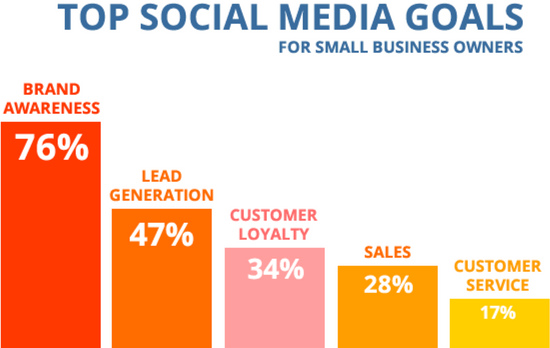
Credit: lyfemarketing.com
Here's a quick guide when considering your goals; make sure they are:
- Goals that are measurable as you move forward
- Be specific as this leads to clarity, and clarity pushes people forward
- Don't make it difficult; step-by-step, learn as you go
- Find pain points between easy and difficult; if too complicated, your time is wasted; if too easy, you've achieved nothing. You need to find a middle ground and start
Remember, every brand can be on social media. Still, without purpose and descriptive images and continual content and activity, no one will notice.
Multi-Channel Social Media Development
By now, we all understand the importance of social media interaction and how it can benefit your overall online presence. However, making it effective is not as easy.
You need to spread your social media with so many platforms with different audiences, young and old.
A coordinated social media strategy using multiple relevant platforms can boost your rankings.
When you develop the plan, you should focus on:
- Boost the engagement levels of your audience
- Push brand awareness into every corner
- Improve your conversion rates
Coordinating multiple social media platforms is not easy.
Here's how you can create a multi-channel social media strategy:
Using Platforms your Target Market Frequent
A common mistake is to be playing music to the wrong ears. As a fisherman would say, you need to know where the fish are.
Specific social media sites are better suited to particular industries and types of businesses than others, for example:
- Manufacturing: B2B branding is more effective on LinkedIn
- Retail: Platforms such as Facebook and Instagram are king
- Visual Content: Pinterest is the easiest
- Media and Entertainment: Snapchat is better as that is where influencers and Millenials spend their social media time.
So look to match your business with your audience for quicker exposure and a growing fan base.
Utilising Quality Backlinks
Backlinks are links on other websites that link back to your website. These are an excellent way to increase your website's visibility in search engines. However, you need to ensure that the websites you're getting backlinks from are relevant, trustworthy, and have high domain authority. It's important that you do your research before requesting a backlink. If you approach a site with low domain authority, you risk your website being affected.
So here are a few snippets of ways to get you there and utilise what quality, clean backlinks can do for your site.
Guest blogging
Guest blogging seems to have been around forever, but it is still just as effective.
It's a free pass to established audiences interested in your niche and industry.
On the back of this, you can start interacting and helps build your followers through your social media platforms and drives convertible traffic to the site. At the same time, you get clean, quality backlinks, and Google can see you are relevant within your niche.
Remember, with guest blogging, you do need to pull out all the stops. It must be written of a high-quality standard, equal, if not better, than the content on your website.
Not all are successful, but perseverance will win. Here are some pointers to finding opportunities for guest blogging when entering Google:
- Write Keyword -add- guest posts
- Write keyword -add- become a contributor
- Write Keyword -add- inurl:write-for-us
- Write Keyword -add- inurl:contribute
- Write Keyword -add- intitle: write for us
Make your Internal Linking Structure Solid
While standard internal links don't boost your ranking much, they assist with your UX and navigation on the site. It is also an intelligent link-building technique that utilises your decided anchor text.
But as with any other techniques in 2022, don't create too many otherwise, Google will deem your site suspicious.
Analysing the competitions "mentions"
There's nothing illegal about monitoring your competition. Still, their backlinks alone are not delving deep enough into why they are above you on the SERPs.
Knowing where and when their brand is being mentioned on the web is a priceless commodity to know.
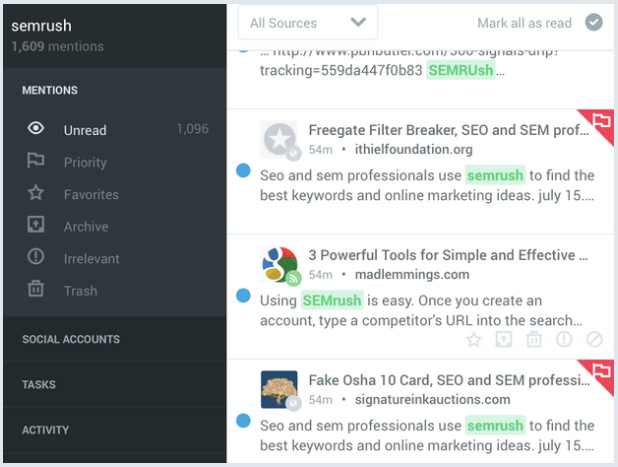
Credit: SemRush.com
As if a potential customer asks a question to another business in your niche, you will see and have the ability to answer that question first and offer help. Therefore building the relationship, and they may come over to you. Mention is a superb tool for this.
So not only potentially gaining customers but also a valuable backlink too.
Google Analytics Is your Friend
Google Analytics has evolved to be one of the most prominent free-to-use tools online.
It is in Google's interest for you to get the best out of your online presence as it provides a premium service to its users.
Here are some reasons why:
Understanding Client's Behavioural Patterns
Google's latest version has a unique feature that helps track your business's behavioural patterns.
The new version Get Started with Reports provides information on the client's lifecycle when interacting on your website or social media channels.
With individual user IDs, you can track all their patterns. Post-pandemic behavioural patterns keep changing drastically as "the new norm" takes shape.
With true data at your fingertips, real-time decisions are more manageable. By having precise data on engagement patterns with your products and customer acquisitions, you can plan for higher customer retention.
This will help you think about a bespoke approach to an SEO campaign.
Targeted Marketing
Google Analytics provides features to assist you in managing your digital marketing campaign. Google's tool is flexible and collects data that is useable in various ways.
From the data collected, it can process and suggest how to approach personal ads; these will take into consideration geographical information.
Search Engine Optimisation (SEO)
By now, I don't need to explain what SEO is, but it is the most powerful marketing tool in the world in 2022 with no signs of slowing down.
And Google Analytics is pushing the boundaries to give even more accurate information and metrics to small businesses to help them thrive.
Using the tool, you can get insights into each of your pages. What and where traffic is going on them, plus what your best-performing pages are. Then you can optimise them further and analyse why your other pages are not.
Bottom Line
With internet usage at all-time highs, everyone must realise that SEO is becoming more technical and comprehensive by the day. It is no longer a part-time job or a hobby; those approaches may cause more harm than good. It's time to call in experts to help boost your website's rankings. With over 200 rankings factors, where would you start if you weren't an SEO professional? I hope this blog has some helpful information and good luck for the rest of the year.




